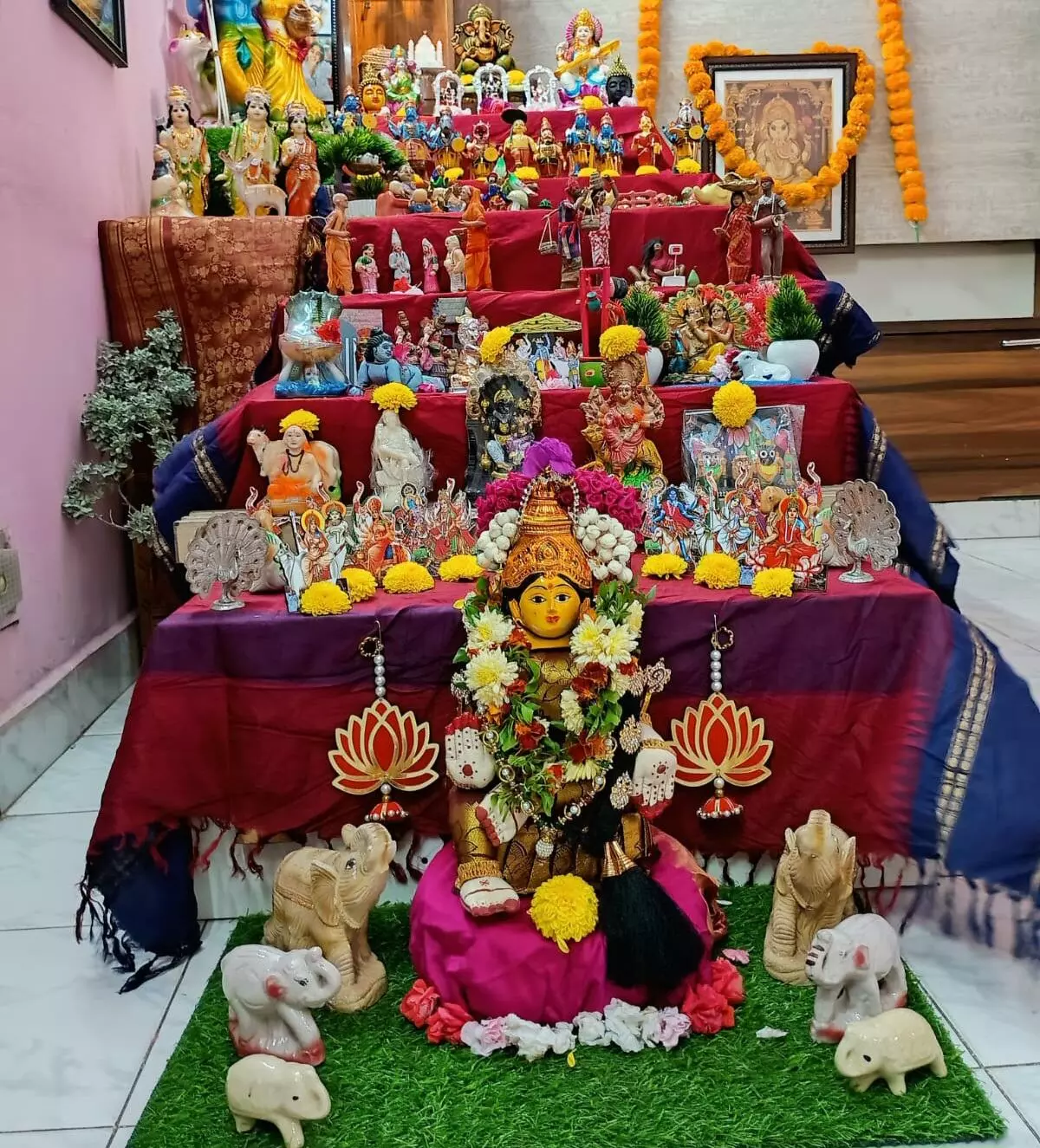All you want to know about Bommala Koluvu that continues to inspire generations
The central focus of the Koluvu is the deities from Hindu mythology, especially during Navaratri
By Sri Lakshmi Muttevi
Visakhapatnam: Even in the digital era, the practice of Bommala Koluvu has not lost its sheen.
Thanks to rich cultural moorings, the tradition has been passed on from generation to generation only to become a centerpiece in many homes during the festival season.
Bommala Koluvu (also known as Golu) is an ancient practice observed during festivals like Navaratri and Sankranti in South India, particularly in Andhra Pradesh, Telangana, Tamil Nadu, and Karnataka.
It involves a grand display of dolls depicting mythological stories, festivals, cultural scenes, and even everyday life. Central to this tradition is the worship of Goddess Bala Tripura Sundari, who is believed to be fond of toys and children. A Koluvu with either five or nine steps is commonly arranged in homes, where neighbors and family are invited to admire the display.
What is the significance?
The Koluvu typically begins with placing idols of deities, and the remaining levels illustrate various mythological narratives from Ramayana, Mahabharata, Dasavatara, and everyday scenes like temples, weddings, markets, schools, and even modern settings like shopping malls and cities. This elaborate arrangement serves as a reflection of culture and heritage, with stories passed down to children through the dolls.
How Bommala Koluvu is setup:
The dolls are arranged on a series of odd-numbered steps (3, 5, 7, 9, or 11), symbolizing spiritual progression. The dolls can include deities, mythological characters, and representations of everyday life. The tradition honors divine order and feminine power, celebrating the triumph of good over evil with a special focus on Goddesses Durga, Lakshmi, and Saraswati.
Creative and thematic displays:
The central focus of the Koluvu is the deities from Hindu mythology, especially during Navaratri. Common figures include Durga, Lakshmi, Saraswati, Vishnu, and Shiva, alongside depictions of mythological scenes from Ramayana and Mahabharata. A popular theme is the Dasavatara, showcasing the ten avatars of Lord Vishnu.
In recent years, families have embraced more creative themes, often reflecting social messages or contemporary issues. People also incorporate miniature models of cities, historical landmarks, and scenes from everyday life. Each year, new dolls are added to the collection, keeping the tradition fresh and relevant.
The Tradition and significance of the steps:
Three steps symbolize the Tri-murti (Brahma, Vishnu, Shiva) or the goddesses Durga, Lakshmi, and Saraswati.
Five steps represent the Pancha Bhootas (five elements: Earth, Water, Fire, Air, and Space).
Seven steps signify the Sapta Rishis (seven sages) or the seven sacred rivers of India.
Nine steps honor the Navadurga, the nine forms of Goddess Durga.
Eleven steps are sometimes used to create a more elaborate display with numerous deities and mythological figures.
Families take great pride in maintaining this tradition. Usha from Visakhapatnam shared, "Every Dasara is special because it teaches our children so much. No matter how busy we are, we always make time for this tradition. Along with old toys that I’ve kept for years, I bought some new, creative ones this year."
Similarly, Chandrika from Vijayawada recalled how her grandmother taught her the importance of the Koluvu. "My grandmother always insisted that future generations continue the tradition. Now, I'm passing it on to my daughters In this way, Bommala Koluvu not only brings families together but also serves as a living reminder of cultural heritage and shared stories."